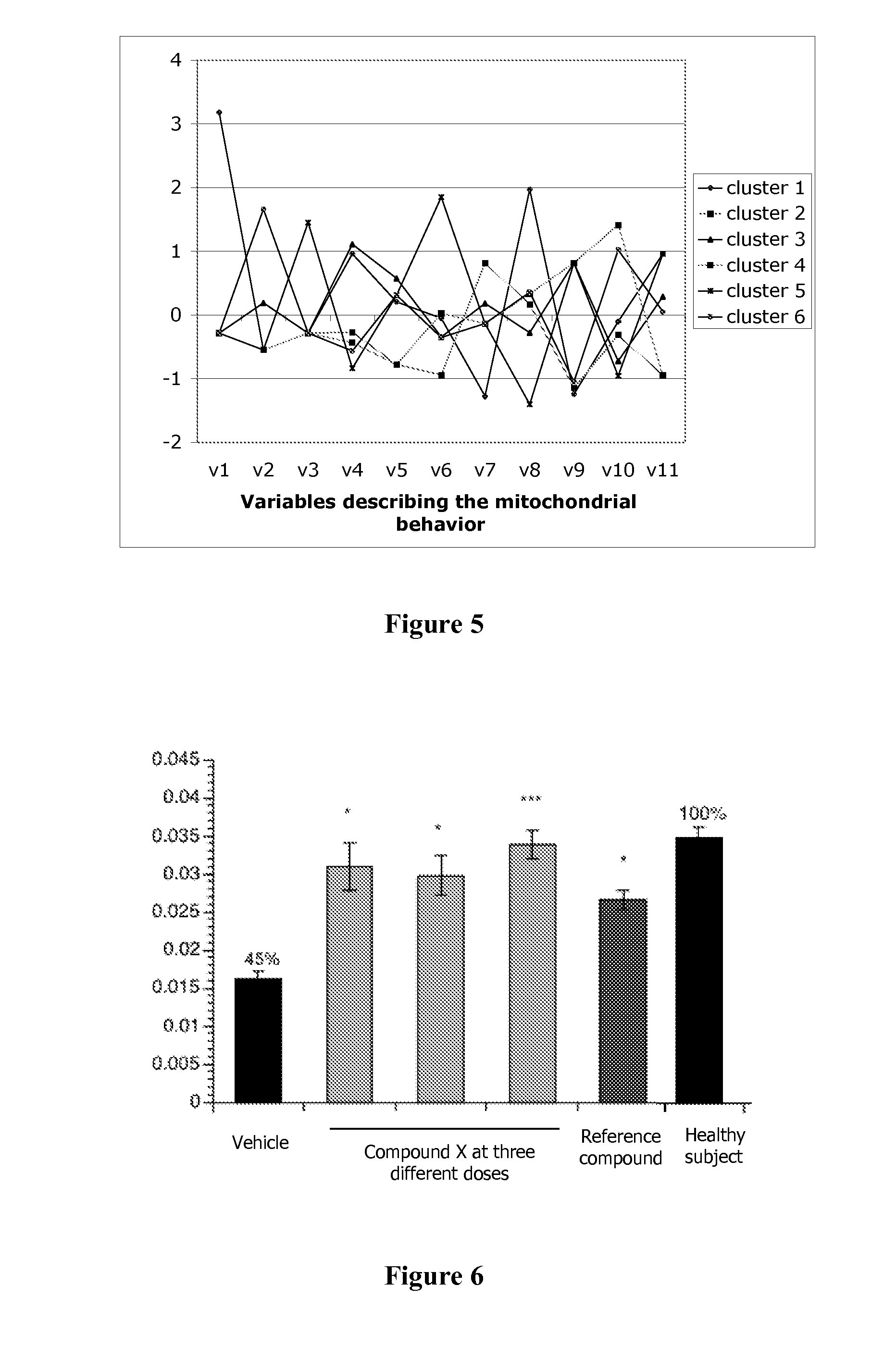Method to predict toxicity using the analysis of dynamic organelle behaviour
a dynamic organelle and analysis technology, applied in the field of toxicology, can solve the problems of affecting the occurrence of toxicity in humans, affecting the toxicity of substances, and the relatively low number of animals on which a substance is tested, and cannot predict the occurrence of low frequency toxicity events
- Summary
- Abstract
- Description
- Claims
- Application Information
AI Technical Summary
Benefits of technology
Problems solved by technology
Method used
Image
Examples
example 1
[0110]Cells were labelled with a mitochondrial dye such as mitotracker or were transfected with a GFP-expressing construct which expression was targeted to the mitochondria. Labelled mitochondria were observed in live cells using a fluorescence microscope. Time lapse images are captured and analyzed to record[0111]the typology of the mitochondria displacements by the measure of speed, amplitude and frequency of movements of individual mitochondria between two successive frames;[0112]the integrity of the mitochondrial membrane evaluated by the dynamic of the label leakage, aggravated when the mitochondrial permeability transition pore opens;[0113]the equilibrium of the relationship of the mitochondria with the cell cytoskeleton assessed by the directionality of the mitochondria with respect to the microtubules and / or actin filament network within the cell;[0114]the morphology adopted by the mitochondria measured by the length of the mitochondria and the fre...
example 2
[0135]Prediction of the Efficacy of a Drug for the Treatment of Huntington's Disease.
[0136]Healthy subjects and patients suffering from Huntington's disease were studied (at least 6 in each group). These were age and gender matched but varied in the disease progression and severity at the time of tissue sampling. The data showed a significant defect induced by the disease in the mitochondrial behaviour as represented by the index of the mitochondrial behaviour obtained from patient cells incubated with the vehicle compared to the index obtained from healthy subject cells (FIG. 6).
[0137]The method of the invention was used to test the efficacy of molecules under development to reverse / compensate for this behavioural impairment of mitochondria functionality. The inventors found a particular undisclosed compound (compound X) that was particularly efficacious in restoring mitochondrial behaviour characteristics of HD-affected cells to the level of that seen in...
PUM
| Property | Measurement | Unit |
|---|---|---|
| morphology | aaaaa | aaaaa |
| permeability | aaaaa | aaaaa |
| frequency | aaaaa | aaaaa |
Abstract
Description
Claims
Application Information
 Login to View More
Login to View More - R&D
- Intellectual Property
- Life Sciences
- Materials
- Tech Scout
- Unparalleled Data Quality
- Higher Quality Content
- 60% Fewer Hallucinations
Browse by: Latest US Patents, China's latest patents, Technical Efficacy Thesaurus, Application Domain, Technology Topic, Popular Technical Reports.
© 2025 PatSnap. All rights reserved.Legal|Privacy policy|Modern Slavery Act Transparency Statement|Sitemap|About US| Contact US: help@patsnap.com



